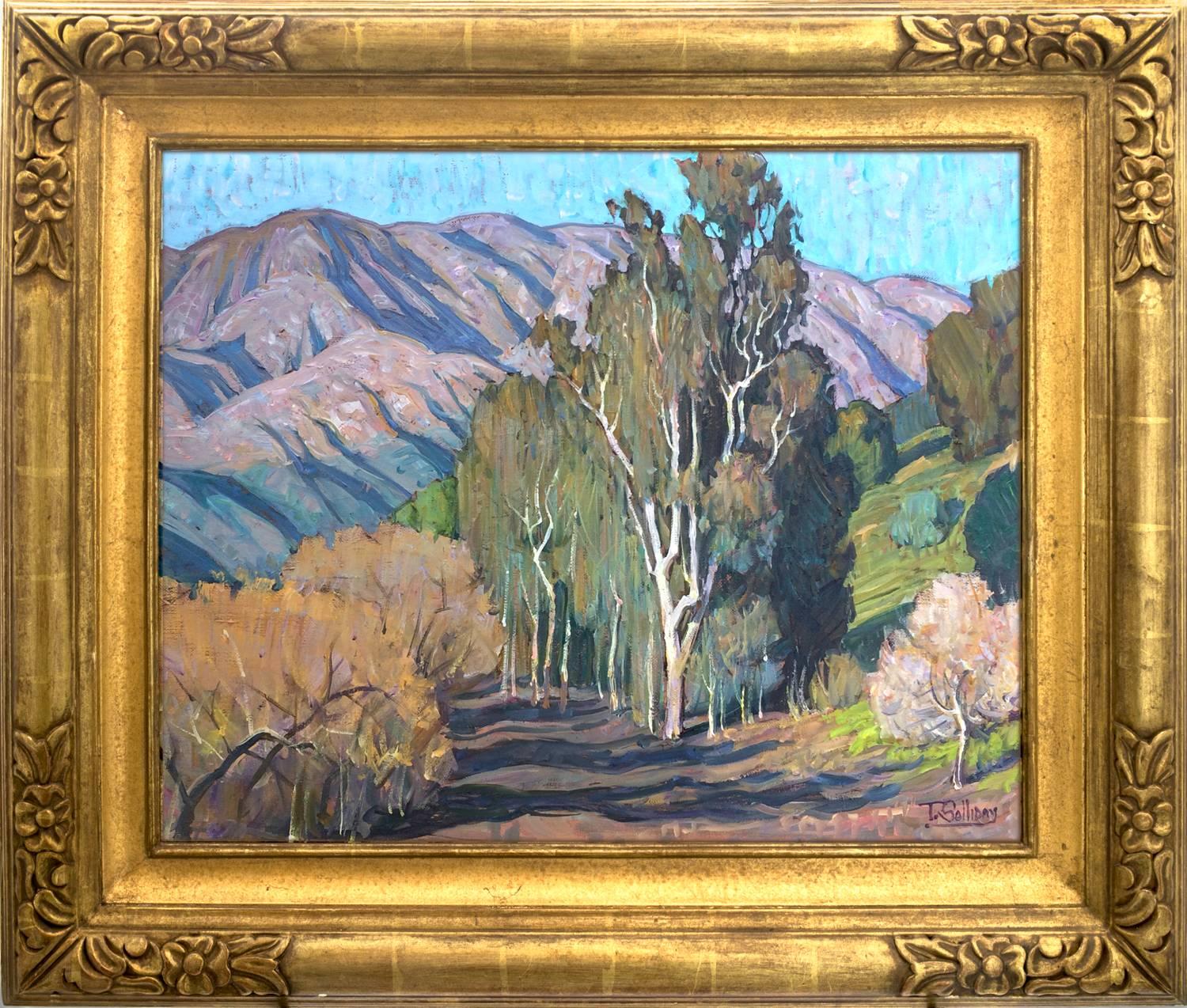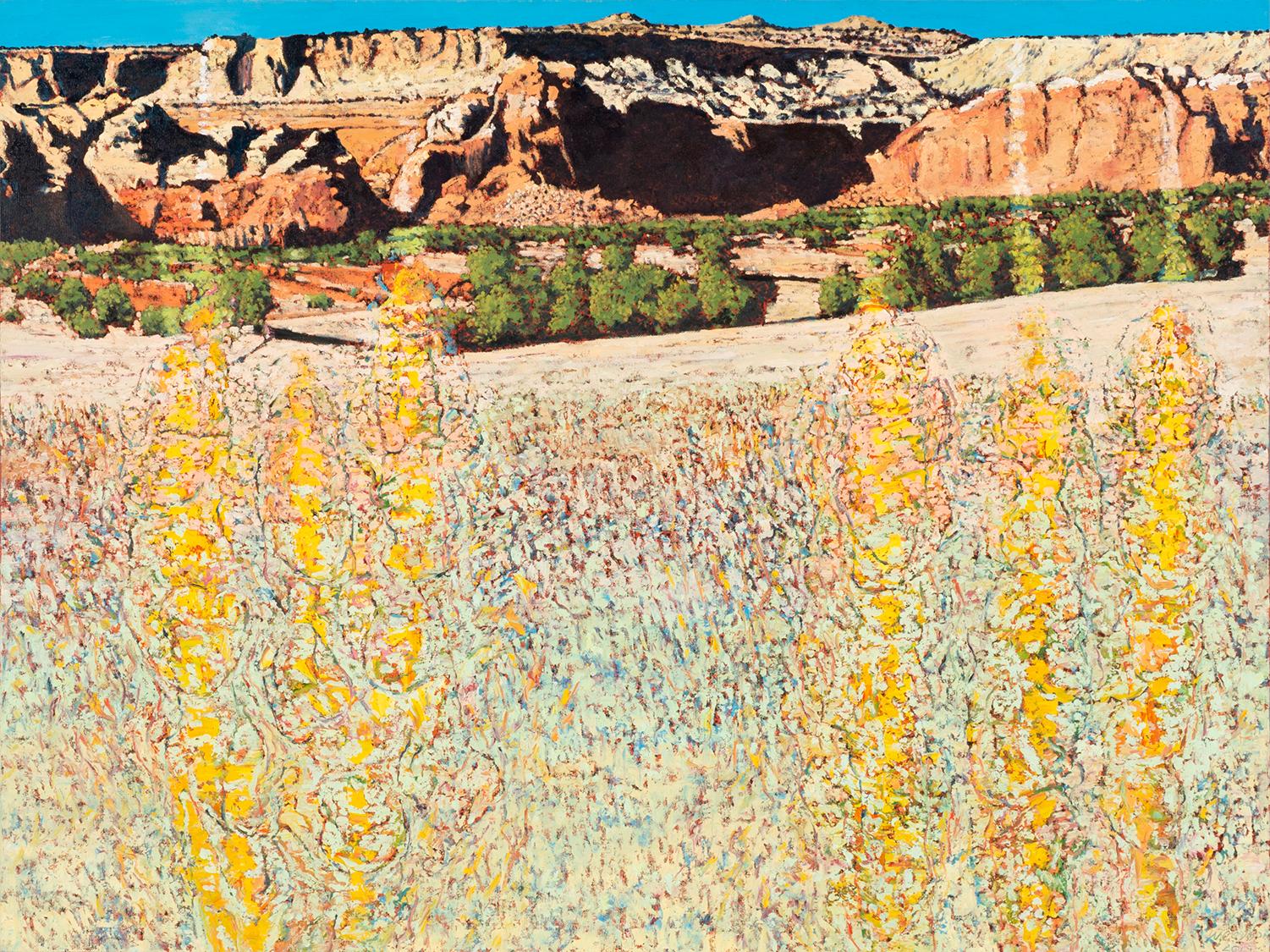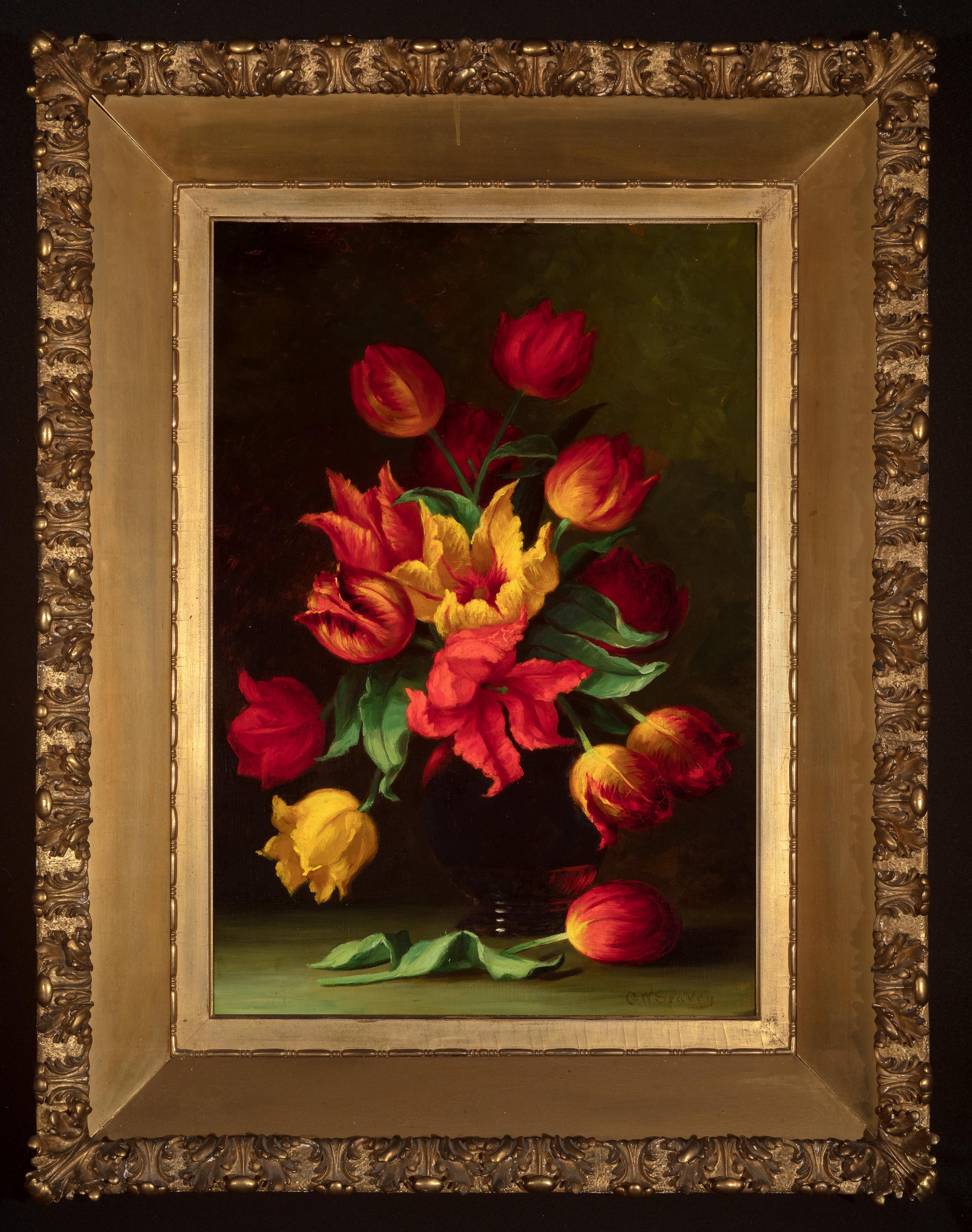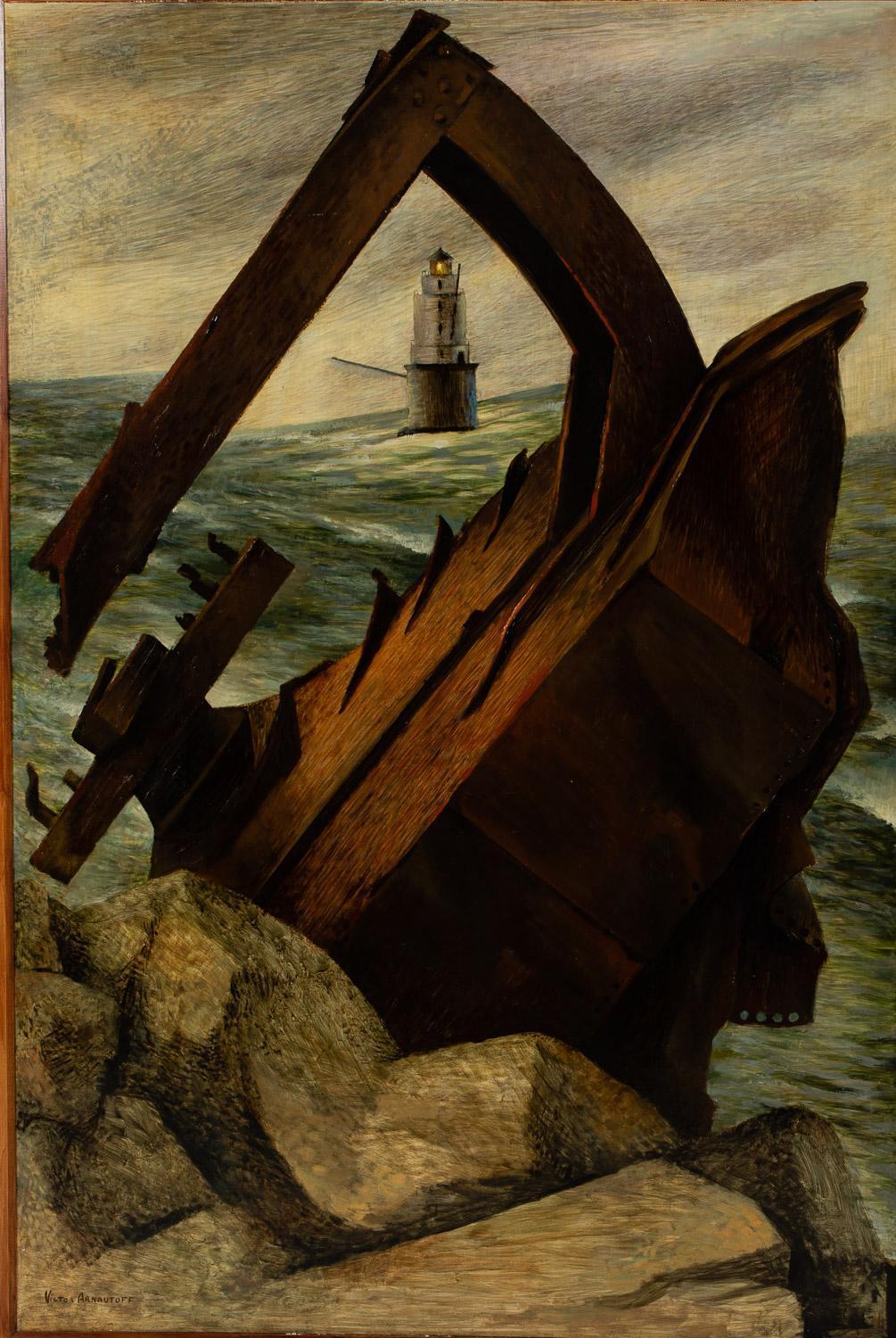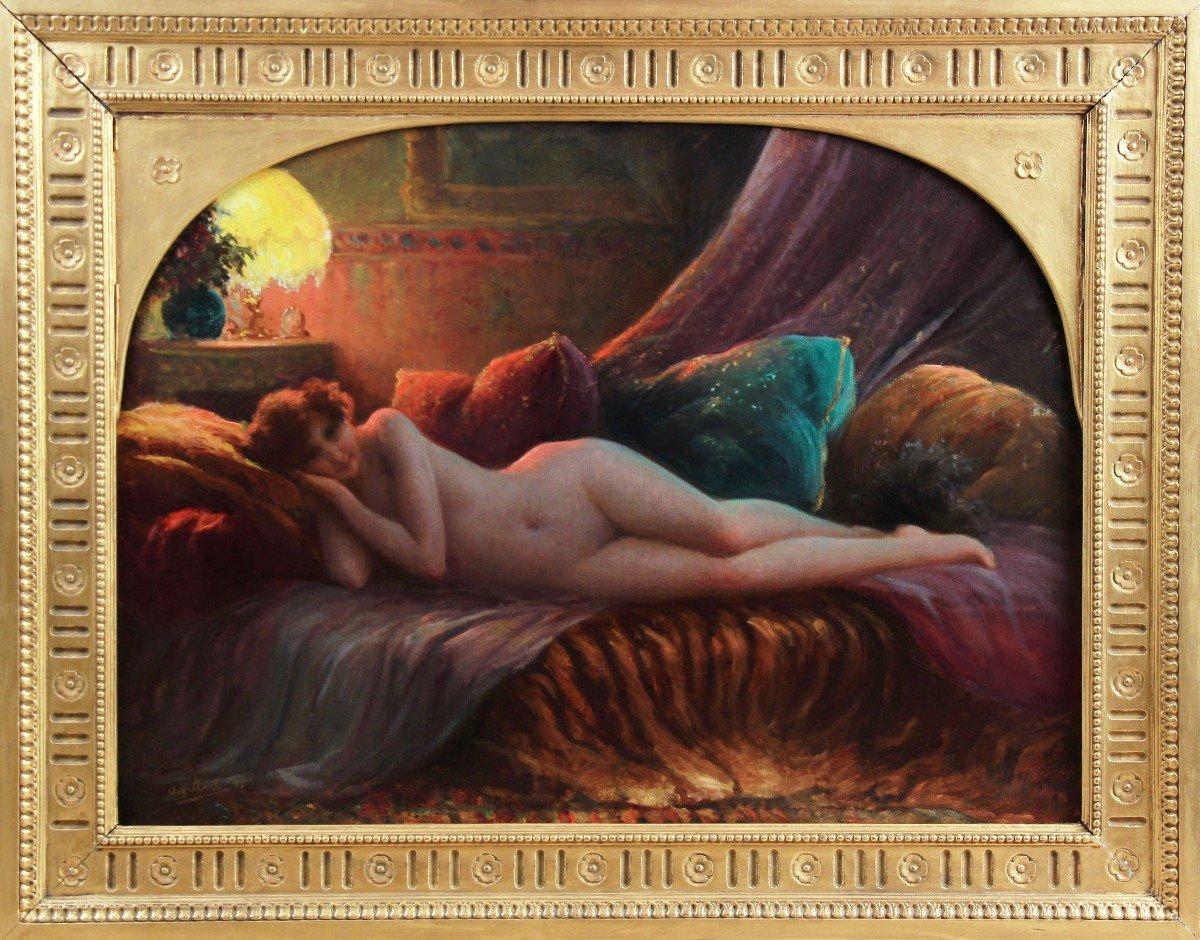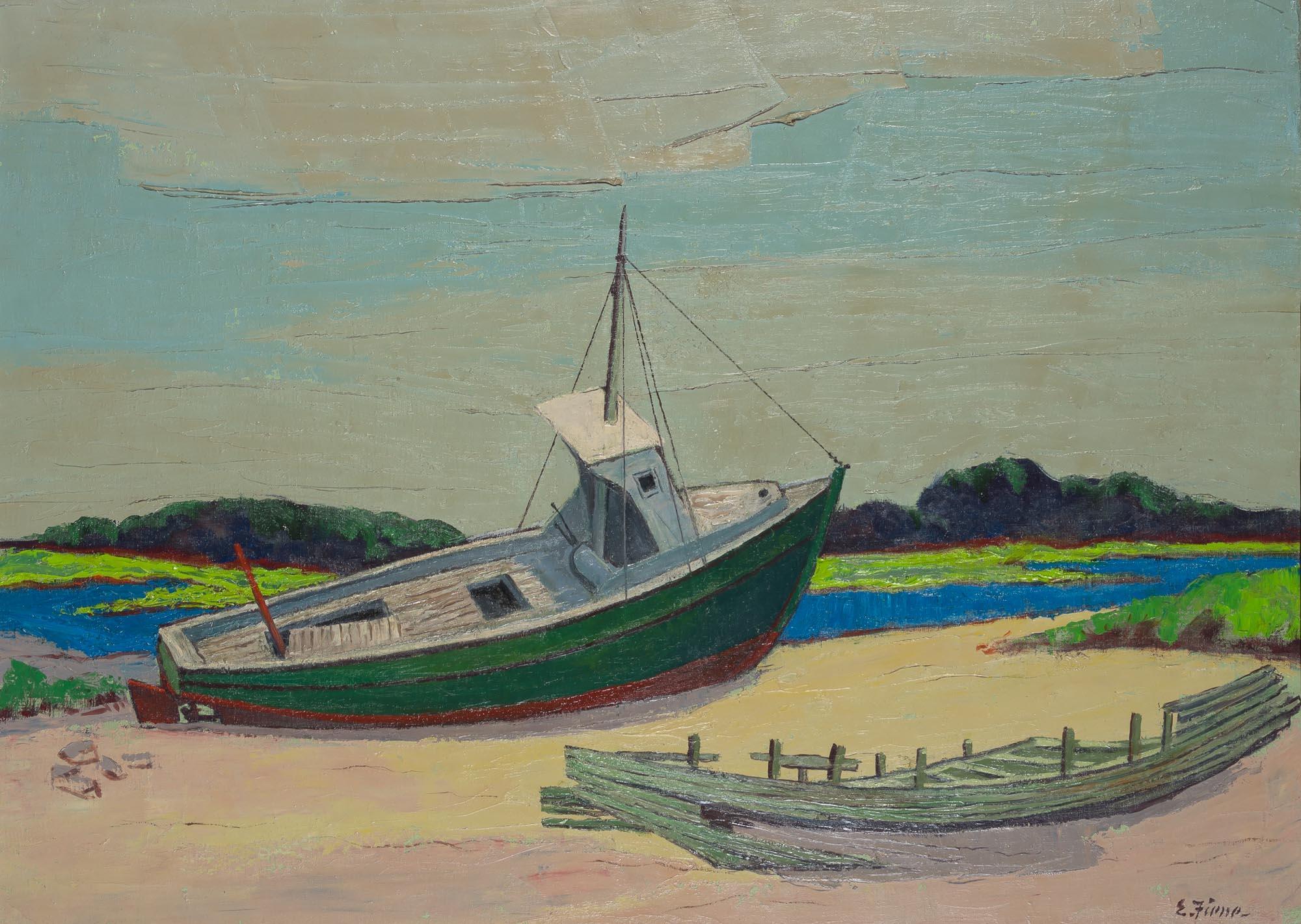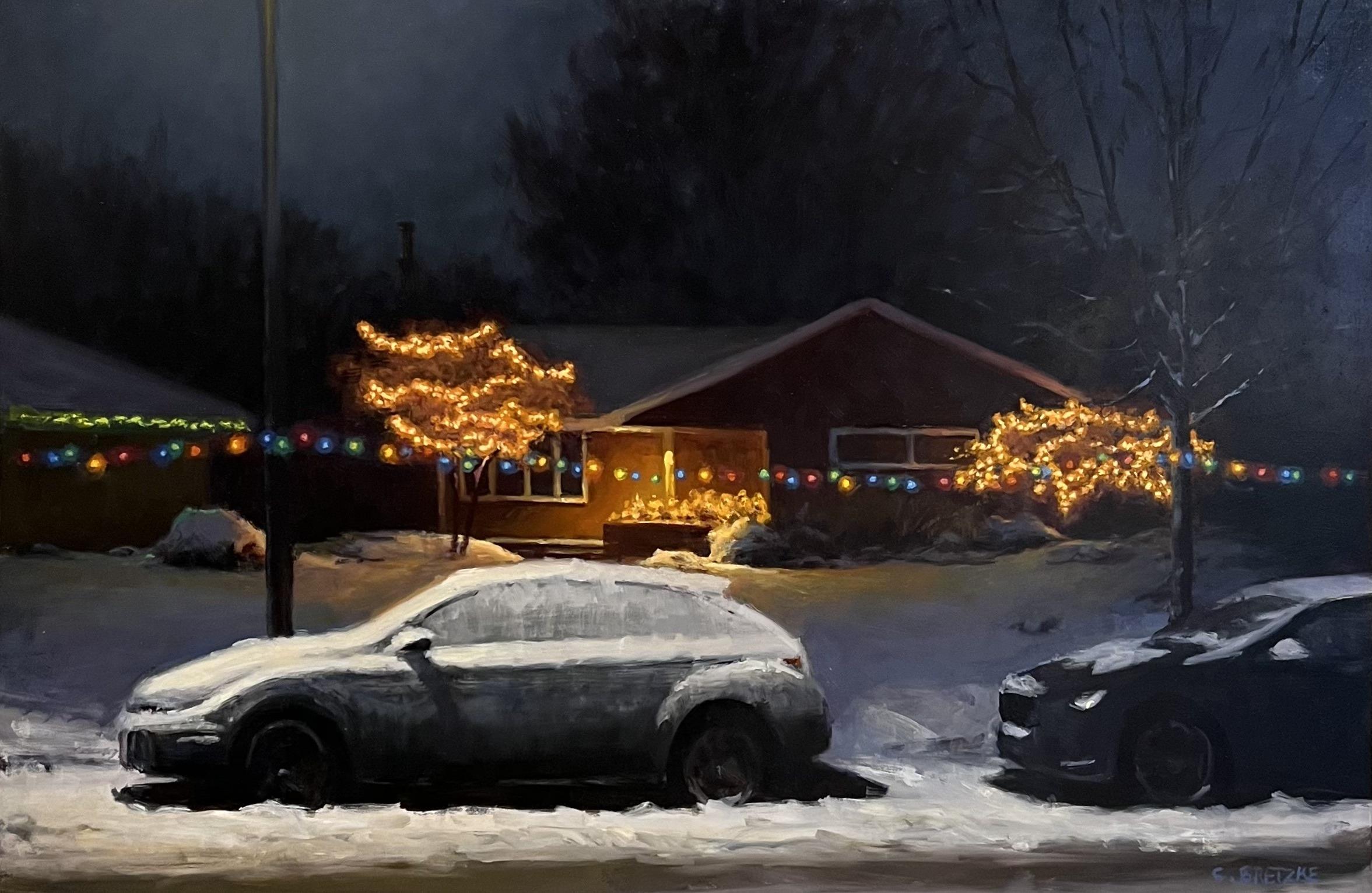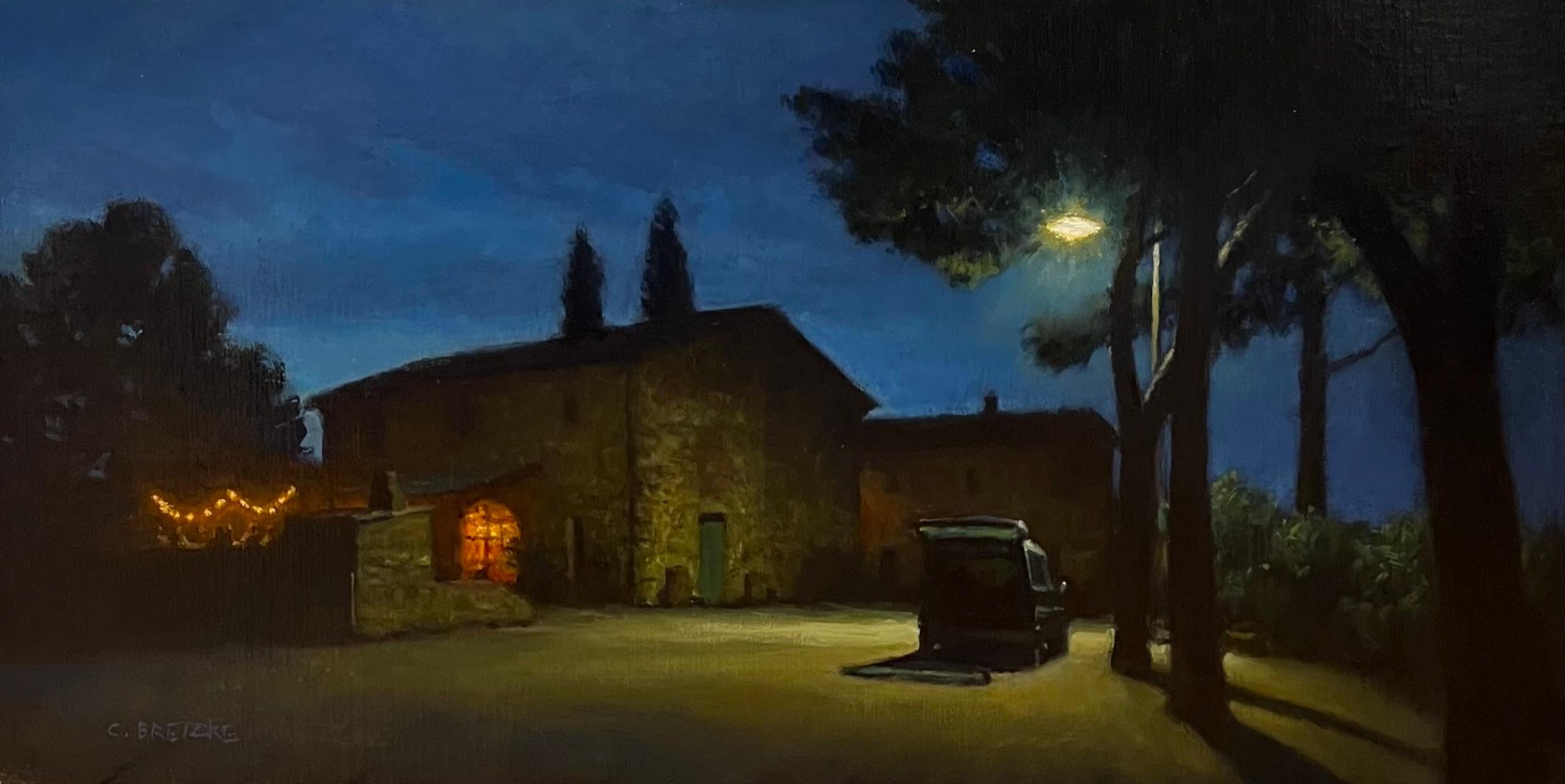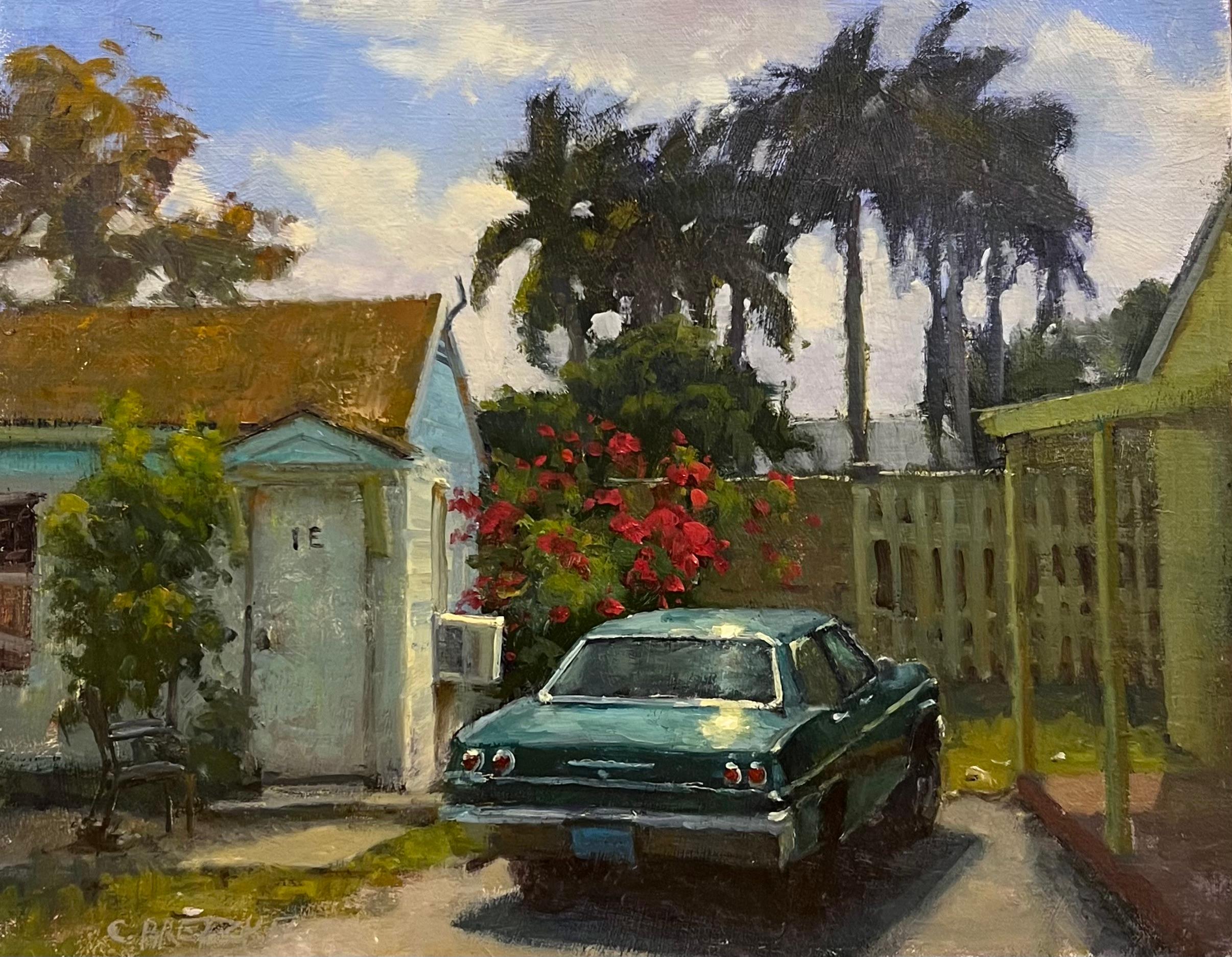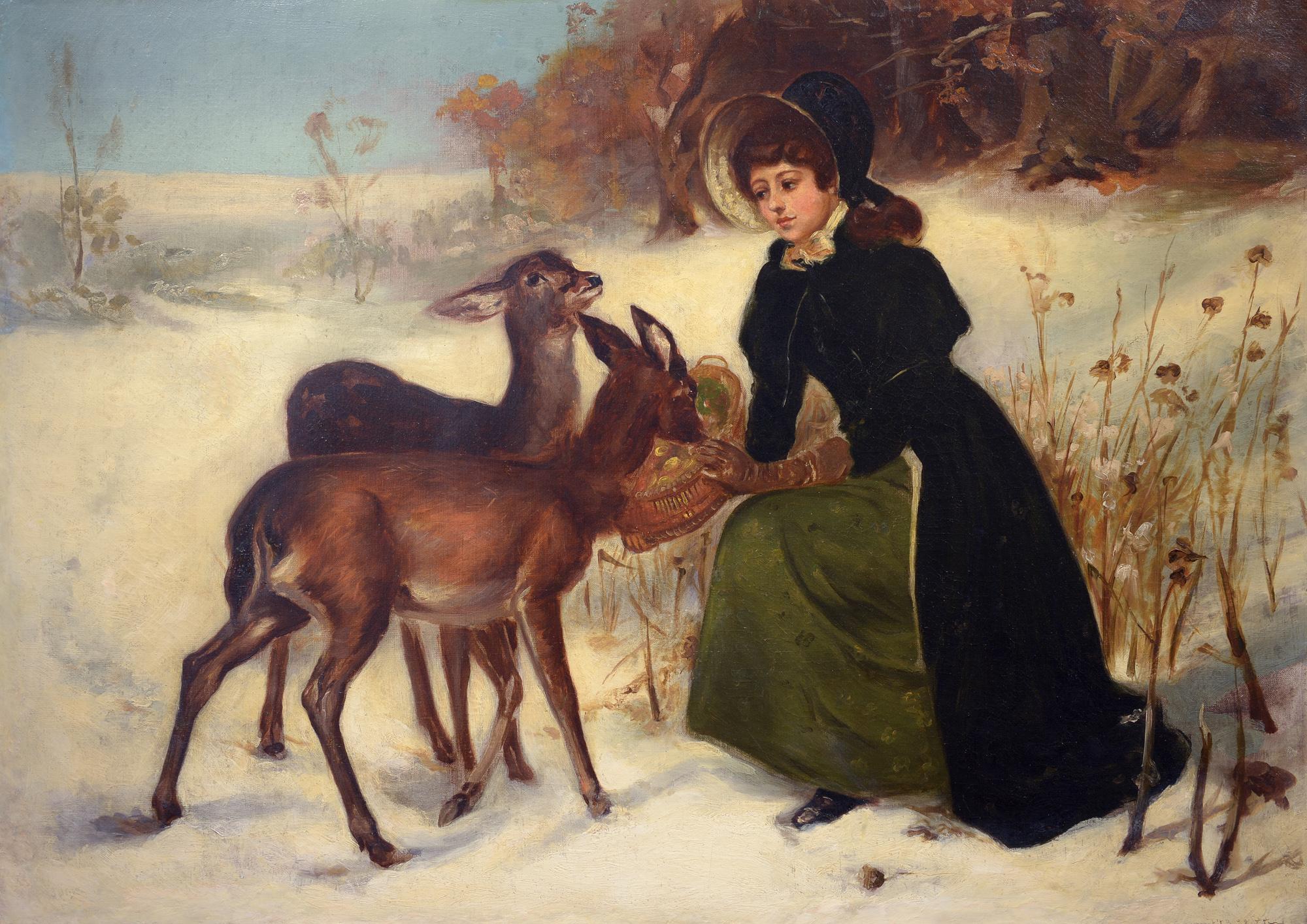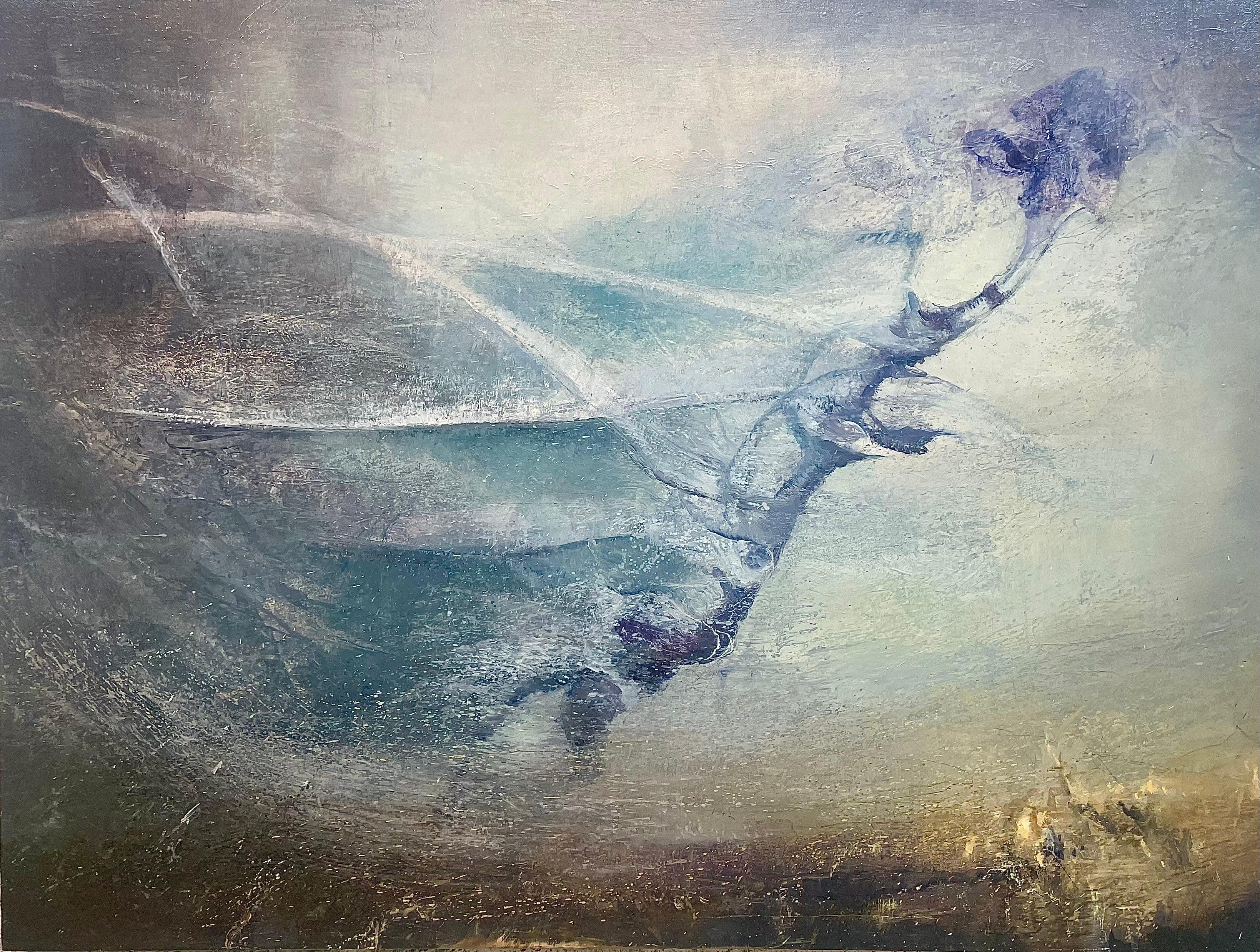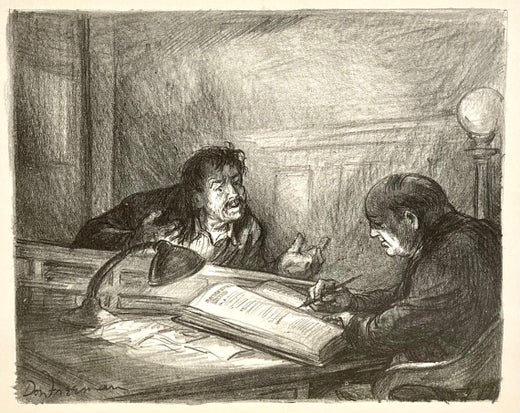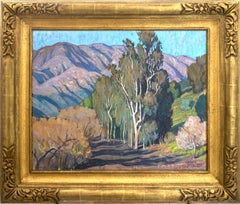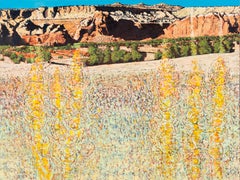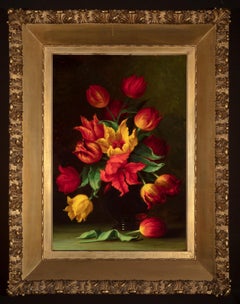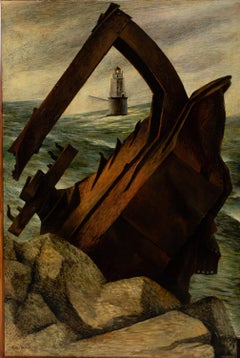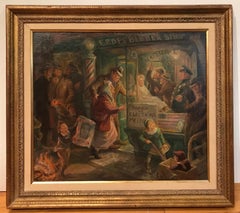
Trickery at the Polls
View Similar Items
1 of 14
Don FreemanTrickery at the Polls
About the Item
- Creator:Don Freeman (1907 - 1978, American)
- Dimensions:Height: 23 in (58.42 cm)Width: 26 in (66.04 cm)
- Medium:
- Movement & Style:
- Period:
- Condition:
- Gallery Location:Rego Park, NY
- Reference Number:1stDibs: LU157828399582
Don Freeman
Illustrator, painter and lithographer, Don Freeman (1908-1978) was born in San Diego, CA in 1908. He studied at the San Diego School of Fine Arts and continued in 1928 at the Art Students League in New York City under John Sloan and Harry Wickey. Remaining in New York, he did drawings of the theater, which were published in the Herald Tribune, New York Times, and Theater Magazine. Most of his career was spent in New York city where he captured the spirit and essence of everyday life during the 1930s and 1940s. He illustrated the works, Human Comedy (Saroyan), White Deer (Thurber() and Once Around the Sun (Atkinson). He was the author of Come One, Come All, and in 1951 he began illustrating a total of 33 children's books, which he co-authored with his wife, Lydia. During his last 20 years he maintained a home in Santa Barbara, CA. He died in 1978 while in New York City to meet his editor at Viking Press. Three years before his demise Mayor Lindsey presented him with the keys to the city and dubbed him the "Daumier of New York City."
Authenticity Guarantee
In the unlikely event there’s an issue with an item’s authenticity, contact us within 1 year for a full refund. DetailsMoney-Back Guarantee
If your item is not as described, is damaged in transit, or does not arrive, contact us within 7 days for a full refund. Details24-Hour Cancellation
You have a 24-hour grace period in which to reconsider your purchase, with no questions asked.Vetted Professional Sellers
Our world-class sellers must adhere to strict standards for service and quality, maintaining the integrity of our listings.Price-Match Guarantee
If you find that a seller listed the same item for a lower price elsewhere, we’ll match it.Trusted Global Delivery
Our best-in-class carrier network provides specialized shipping options worldwide, including custom delivery.You May Also Like
Pathway to the San Gabrielino Trail; Neglected and Protected
By Tim Solliday
Located in Pasadena, CA
Provenance
Acquired by the gallery directly from the artist
Painted en plein air in the San Gabriel Mountains near the artist's home in the early summer of 2013.
Description
As part...
Category
2010s American Realist Landscape Paintings
Materials
Canvas, Oil
Unfolding Temporal Manifestation
By Jim Woodson
Located in Dallas, TX
Short Statements on Painting by Jim Woodson (in no particular order):
Remember less, Explore More
Learn then forget, then look and discover
Move Thought into Thinking
A verb is more...
Category
2010s American Realist Landscape Paintings
Materials
Canvas, Oil
Still life - Tulips
Located in New Orleans, LA
Framed dimensions: 36.5" h x 28.5' w x 5.75' d
Sight size: 25.5' h x 17.5' w
Signature: bottom right
Early 20th century still life, original gilt frame, original stretcher.
The following excerpt was written and submitted by Gary R. Libby from an essay in his book Reflections: Paintings of Florida 1835-2000.
Very little is currently known about the still-life painter, George W. Seavey. Maybelle Mann’s Art in Florida, 1999, suggests that Seavey came to St. Augustine in 1883, the year of financier and hotel magnate “Henry Flagler...
Category
Early 20th Century American Realist Still-life Paintings
Materials
Canvas, Oil
"Motion, " Victor Arnautoff, San Francisco Lighthouse, World's Fair WPA Painting
By Victor Michail Arnautoff
Located in New York, NY
Victor Mikhail Arnautoff (1896 - 1979)
Motion (Mile Rocks Lighthouse), San Francisco, 1939
Oil and tempera on board
60 x 40 inches
Signed lower left
Provenance:
The artist
California School of Fine Arts (CFSA)
John & Lynne Bolen Fine Arts, Huntington Beach, California
Exhibited:
New York, World's Fair, Exhibition of Contemporary American Art, 1939.
San Francisco Museum of Art, 1962.
Literature:
American Art from the New York World's Fair 1939, Poughkeepsie, 1987, no. 11, p. 41, illustrated.
Robert W. Cherny, Victor Arnautoff and the Politics of Art, Urbana, Illinois, 2017.
The lighthouse in the distance is the Mile Rocks Lighthouse in San Francisco Bay, built in 1906 after many shipwrecks made the lighthouse necessary. In 1962 the lighthouse was reduced in size to make room for a helipad.
Arnautoff was the son of a Russian Orthodox priest. He showed a talent for art from an early age and hoped to study art after graduating from the gymnasium in Mariupol. With the outbreak of World War I, he enrolled in the Yelizavetgrad Cavalry School. He went on to hold military leadership positions in the army of Nicholas II and the White Siberian army. With the defeat of the Whites in Siberia, he crossed into northeastern China and surrendered his weapons. Arnautoff remained in China for five years. He again tried to pursue art, but was impoverished and took a position training the cavalry of the warlord Zhang Zuolin. He met and married Lydia Blonsky and they had two sons, Michael and Vasily.
In November 1925 Arnautoff went to San Francisco on a student visa to study at the California School of Fine Arts. There he studied sculpture with Edgar Walter and painting with several instructors. His wife and children joined him, and they all continued to Mexico in 1929, where, on Ralph Stackpole...
Category
1930s American Realist Landscape Paintings
Materials
Canvas, Oil, Tempera
Reclining Nude On A Couch, Art Nouveau Signed Allan Gilbert American artist
Located in Gavere, BE
"Nude Lying On A Couch, Art Nouveau Signed "Allan Gilbert"
Charles Allan Gilbert (September 3, 1873 - April 20, 1929), better known as C. Allan Gilbert, was a prominent American illu...
Category
1920s American Realist Nude Paintings
Materials
Canvas, Oil
"Low Tide at Noon, Wellfleet, Massachusetts, " Ernest Fiene, WPA, Boat on Beach
By Ernest Fiene
Located in New York, NY
Ernest Fiene (1894 - 1965)
Low Tide at Noon, Wellfleet, Massachusetts
Oil on canvas
26 x 36 inches
Signed lower right
Ernest Fiene was born in Elberfeld, Germany in 1894. As a teenager, Fiene immigrated to the United States in 1912. He studied art at the National Academy of Design in New York City from 1914 to 1918, taking day classes with Thomas Maynard and evening classes with Leon Kroll. Fiene continued his studies at the Beaux-Arts Institute of Design in Paris from 1916 to 1918, adding classes in printmaking at the Art Students League in 1923.
Fiene began his career as an artist in 1919 with his first exhibition of watercolors at the MacDowell Club arranged by his mentor Robert Henri. In 1923 the Whitney Studio Club mounted a large exhibition of his works. The following year he had an exhibition at the New Gallery in New York, which completely sold out all fifty-two works, including paintings, watercolors, drawings, and etchings. With the proceeds of sales from the New Gallery exhibition, Ernest Fiene and his younger brother Paul, a sculptor, built studios in Woodstock, New York in 1925.
In the early Twenties Ernest Fiene painted mostly landscapes of Woodstock and both the Ramapo and Hudson River Valleys. He was the subject of the first monograph for the Younger Artists Series in 1922. Published in Woodstock, the series went on to include Alexander Brook, Peggy Bacon, and Yasuo Kuniyoshi. The book reproduced 1 illustration in color and another 27 reproductions in black and white. Around 1925 Fiene became fascinated with the intensity, excitement, and opportunities for color harmonies New York City offered as a subject. His paintings shifted to urban and industrial themes with architecture, industry, and transportation becoming his subjects.
By 1926 Fiene had attracted the dealer Frank K.M. Rehn, who gave him a one-man exhibition that year, which travelled to the Boston Arts Club. C.W. Kraushaar Galleries gave Fiene a one-man exhibition of urban, landscape, portrait, and still life paintings in 1927. Julianna Force, the director of the Whitney Studio Club and first director of the Whitney Museum of American Art, included two of Fiene's paintings in a fall exhibition in 1928. The Whitney Studio Club showed Fiene's paintings in a two-man exhibition with Glenn O. Coleman that year and acquired three of Fiene's paintings. Also in 1928 Fiene became affiliated with Edith Halpert's Downtown Gallery where he had an exhibition of 20 lithographs in the spring. Fiene sold his house in Woodstock in 1928 to spend more of his time in New York City.
With so many successful exhibitions, Fiene returned to Paris in 1928-29 where he rented Jules Pascin's studio and studied at the Académie de la Grande Chaumière. In France, Fiene painted both landscape and urban subjects developed from ideas influenced by Cubist geometry and the use of flat areas of broad color. Upon returning to New York in 1930, Fiene used this new approach to continue to paint New York skyscraper and waterfront subjects, as well as to begin a series of paintings on changing old New York based on the excavations for Radio City Music Hall and the construction of the Empire State Building. Frank K.M. Rehn Galleries exhibited this series, titled "Changing Old New York," in 1931. Fiene also has solo exhibitions at Rehn Galleries in 1930 and 1932. Fiene's oil paintings are exhibited at the Chicago Arts Club in 1930 as well.
Fiene was included in the Museum of Modern Art's exhibition Painting and Sculpture by Living Americans in December of 1931. Visiting New York, Henri Matisse saw the exhibition and called Fiene's Razing Buildings, West 49th Street the finest painting he had seen in New York. Fiene had two mural studies from his Mechanical Progress series exhibited at the Museum of Modern Art's exhibition Murals by American Painters and Photographers in 1932. Fiene sent View from my Window which depicts Fiene working on a lithograph stone while looking out his window to the newly completed Empire State Building to the Carnegie International in 1931. In 1932 Fiene participated in the first Biennial of American Painting at the Whitney Museum and his prints were included in exhibitions at the Downtown Gallery and the Wehye Gallery. In the same year, Fiene was awarded a Guggenheim fellowship to further study mural painting in Florence, Italy.
On his return from Italy in 1933 Fiene re-engaged himself in New York City life and won several public and private mural projects. Fiene resumed his active exhibition schedule, participating in two group exhibitions at the Whitney Museum and a one-man exhibition of recent paintings at the Downtown Gallery in January 1934. In 1933 he purchased a farm in Southbury, Connecticut, which added Connecticut scenes to his landscape subjects. This was also the year Fiene began to spend summers on Monhegan Island, Maine, where he painted seascapes, harbor scenes, and still lifes.
Fiene's landscape paintings attracted numerous commissions as part of the American Scene movement. From 1935-36 Fiene took an extended sketching trip through the urban, industrial, and farming areas of Pennsylvania and West Virginia. Most of the twenty-four Pennsylvania urban and rural paintings from this trip were featured in an exhibition held at the First National Bank in Pittsburgh in October of 1937 by the Pittsburgh Commission for Industrial Expansion. Fiene said of these works that he formed rhythm, opportunity for space and color, and integrity in the Pennsylvania mill and furnace paintings. Fiene received the silver medal for one of the Pittsburgh paintings...
Category
Mid-20th Century American Realist Landscape Paintings
Materials
Canvas, Oil
